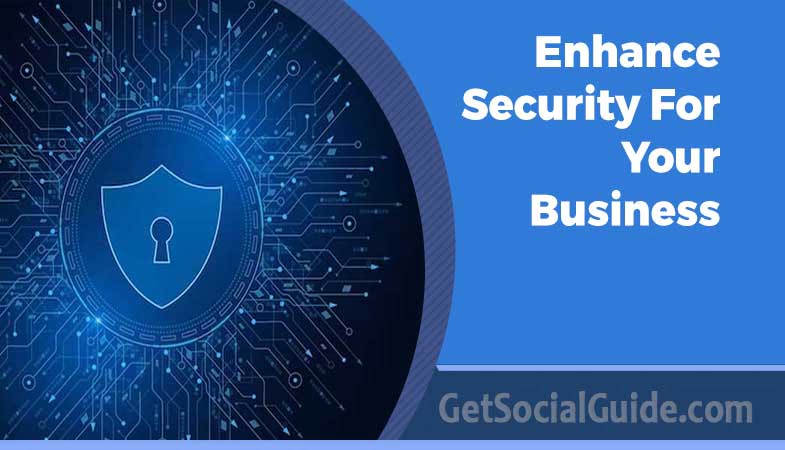How To Enhance Security For Your Businesses In USA
In the fast-evolving landscape of business security, staying ahead of potential threats is paramount. Businesses in the USA, both large and small, are increasingly adopting advanced security measures to safeguard their assets, data, and personnel. This comprehensive guide delves into cutting-edge technical strategies to bolster your business security, ensuring that your defenses are not only robust but also superior to your competitors.
Why Enhancing Security For Businesses In USA Is Necessary
According to the Council on Criminal Justice, in the first half of 2023, there were fewer robberies, home break-ins, business break-ins, and thefts compared to the same period in 2022. Robberies went down by 3.6%, home break-ins by 3.8%, business break-ins by 5%, and thefts by 4.1%. However, these decreases don’t mean the problems are completely gone. So, it’s important for every business to take steps to protect themselves.
Remote Live Video Monitoring
Remote Live Video Monitoring is a cutting-edge security solution that employs advanced technology to provide real-time surveillance of your business premises. Remote live video monitoring involves the use of high-quality surveillance CCTV cameras, connected to a secure network, and monitored remotely by trained security personnel.
IP Cameras:
Invest in high-resolution IP cameras with features like night vision, motion detection, and pan-tilt-zoom capabilities. These cameras can capture clear video footage even in low-light conditions and offer remote control for precise monitoring.
Secure Network:
Establish a secure network infrastructure to transmit video feeds in real-time. Utilize Virtual Private Networks (VPNs) and encryption protocols to safeguard the integrity and confidentiality of video data.
24/7 Monitoring:
Employ skilled security professionals who can remotely monitor the video feeds round the clock. These experts are trained to identify suspicious activities and respond swiftly to potential threats.
Alerts and Notifications:
Set up automated alert systems that trigger notifications in response to specific events, such as unauthorized access or unusual movements detected by the cameras.
Benefits Of Remote Live Video Monitoring Services:
Remote Live Video Monitoring offers several advantages:
Real-time Surveillance:
Instant awareness of security incidents allows for prompt response, reducing the risk of theft, vandalism, or other security breaches.
Cost-Efficiency:
Compared to on-site security personnel, remote monitoring can be more cost-effective while providing continuous coverage.
Deterrence:
Visible surveillance cameras act as a deterrent, discouraging potential criminals from targeting your business.
Vulnerability Assessment
Conducting a thorough vulnerability assessment involves identifying potential weaknesses in your security infrastructure, both digital and physical.
Penetration Testing:
Engage ethical hackers to simulate cyberattacks and identify vulnerabilities in your network, applications, and systems.
Physical Security Audit:
Examine physical access points, such as doors, windows, and entry systems, to identify potential security gaps.
Risk Analysis:
Use quantitative and qualitative methods to assess the likelihood and impact of identified vulnerabilities, helping prioritize security measures.
Benefits Of Vulnerability Assessment:
A comprehensive vulnerability assessment: Provides a clear understanding of your security posture. Enables targeted security investments to address identified weaknesses. Mitigates the risk of security breaches by proactively addressing vulnerabilities.
Cybersecurity Measures
As cyber threats continue to rise, robust cybersecurity measures are crucial to protect digital assets and sensitive data.
Firewalls:
Implement advanced firewall solutions with intrusion detection and prevention capabilities to filter and monitor incoming and outgoing network traffic.
Endpoint Security:
Deploy endpoint protection software to secure individual devices (computers, smartphones) against malware and unauthorized access.
Encryption:
Utilize encryption protocols (e.g., AES) to safeguard data at rest and during transmission, ensuring that only authorized parties can access sensitive information.
Security Information and Event Management (SIEM):
Implement SIEM solutions for business safety that collect and analyze security data from various sources to detect and respond to security incidents effectively.
Benefits Of Cybersecurity Measures:
Robust cybersecurity measures: Protect sensitive data from theft or compromise. Mitigate the risk of cyberattacks and data breaches. Ensure business continuity by minimizing downtime caused by security incidents.
Access Control
Effective access control ensures that only authorized individuals can access specific areas or information within your business premises.
Biometric Access Control:
Utilize biometric authentication methods, such as fingerprint or retina scans, to grant access to secure areas.
Role-Based Access Control (RBAC):
Implement RBAC systems that assign permissions and access levels based on an individual’s role within the organization.
Two-Factor Authentication (2FA):
Require employees to use 2FA methods, such as smart cards or mobile app verification, to access sensitive systems or data.
Benefits Of Access Control:
Access control measures: Prevent unauthorized access and data breaches. Ensure that employees have the appropriate level of access required for their roles. Create an audit trail for access-related activities, aiding in incident investigations.
Employee Training and Awareness
Your employees play a crucial role in maintaining security. Educate and train them to recognize and respond to security threats effectively.
Phishing Awareness Training:
Conduct regular phishing simulation exercises to educate employees on how to identify and report phishing attempts.
Security Policies:
Develop and communicate comprehensive security policies covering data protection, acceptable use of technology, and incident reporting.
Secure Coding Training:
If applicable, provide developers with secure coding training to reduce the risk of vulnerabilities in your software applications.
Benefits Of Employee Training and Awareness:
Investing in employee training and awareness: Reduces the risk of insider threats and human error. Empowers employees to be proactive in maintaining security. Strengthens the organization’s overall security posture.
Incident Response Plan
An incident response plan outlines the procedures to follow in the event of a security breach.
Incident Classification:
Define categories for security incidents based on severity, impact, and urgency.
Response Team:
Assemble a dedicated incident response team consisting of IT professionals, legal experts, and communication specialists.
Incident Investigation:
Detail the steps to follow when investigating and mitigating security incidents.
Communication Protocols:
Establish clear communication channels for notifying stakeholders, including customers, employees, and regulatory bodies.
Benefits Of Incident Response Plan:
An effective incident response plan: Minimizes damage by enabling swift and coordinated responses to security incidents. Preserves the organization’s reputation by demonstrating transparency and accountability. Helps meet legal and regulatory requirements related to data breaches.
Regular Security Audits
Regular security audits and assessments are crucial for evaluating the effectiveness of your security measures.
Automated Scanning Tools:
Employ automated vulnerability scanning tools to continuously assess your network and systems for weaknesses.
Red Team Testing:
Engage external experts to conduct red team testing, simulating realistic attacks to evaluate your security defenses.
Compliance Audits:
If applicable, ensure that your security practices align with industry-specific regulations and standards.
Benefits Of Regular Security Audits:
Frequent security audits: Identify and address new vulnerabilities as they arise. Validate the effectiveness of your security investments. Demonstrate your commitment to security to customers and partners.
Stay Informed
Security threats evolve rapidly. Staying informed about the latest trends and emerging risks is crucial.
Threat Intelligence:
Subscribe to threat intelligence services that provide real-time information about new threats and vulnerabilities.
Security Forums and Conferences:
Participate in industry-specific security forums and conferences. Engaging with the cybersecurity community allows you to stay updated on the latest trends, exchange information with peers, and gain valuable insights from experts in the field. It’s an opportunity to learn about new technologies, share experiences, and strengthen your network of security professionals.
Benefits Of Staying Informed:
Actively staying informed through threat intelligence services and participation in security forums and conferences: Provides early warnings about emerging threats, enabling timely mitigation. Fosters collaboration and knowledge-sharing with other security professionals. Helps your organization adapt to the ever-evolving threat landscape with up-to-date information and best practices. By incorporating these stay-informed strategies into your security practices, you can further bolster your business’s defenses and maintain a proactive stance against potential security risks.
Conclusion
Elevating business security in the USA demands a multifaceted approach, melding advanced technical strategies with proactive measures. Innovations like Remote Live Video Monitoring, as outlined, enhance real-time surveillance and bolster security. To surpass competitors, prioritize vulnerability assessments, robust cybersecurity, strict access control, employee training, and comprehensive incident response plans. Regular audits and awareness of emerging threats are vital for adaptation. By implementing these steps and continuous improvement, your business can not only withstand threats but also exemplify a commitment to superior security, setting you apart from the competition.



